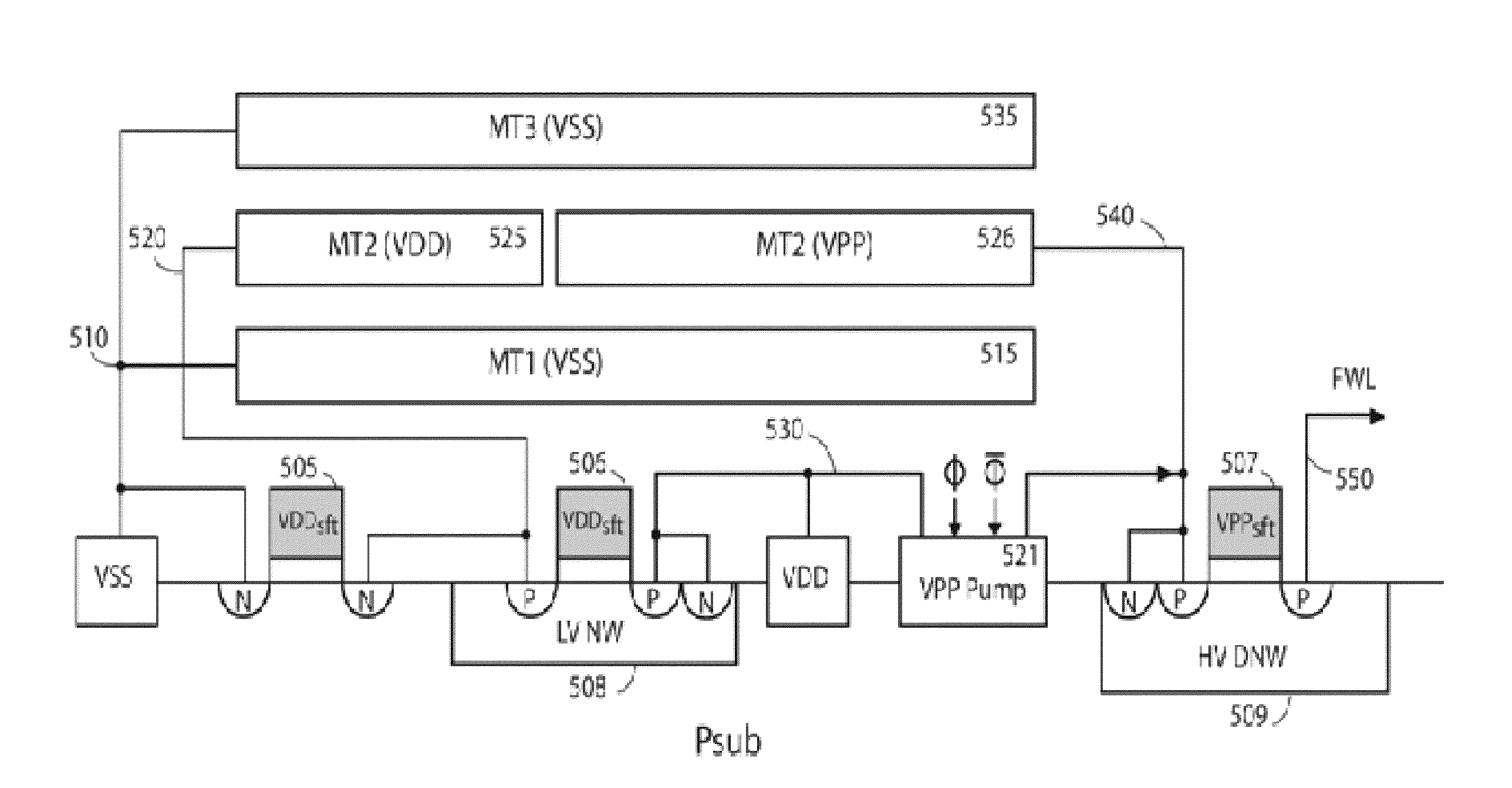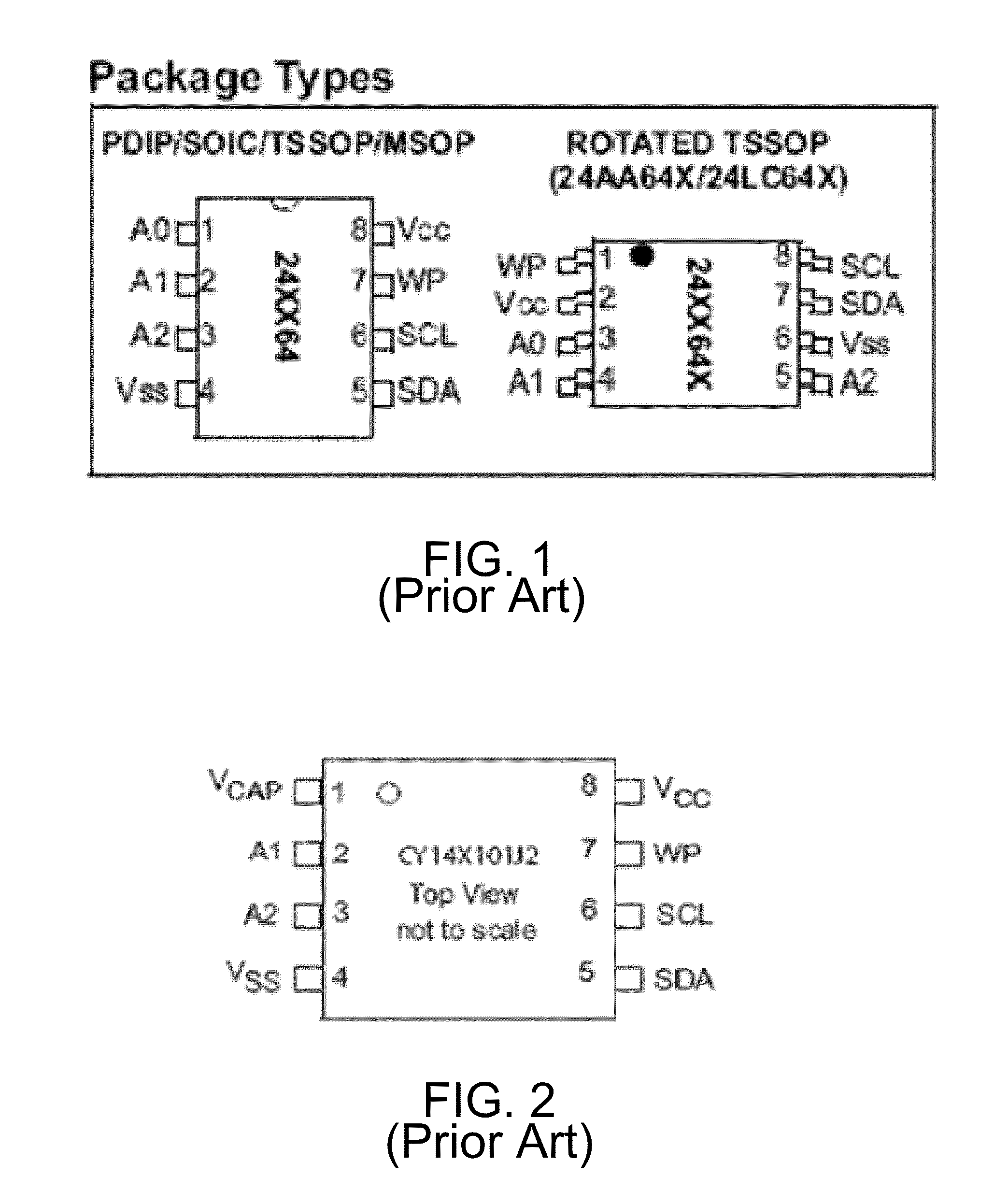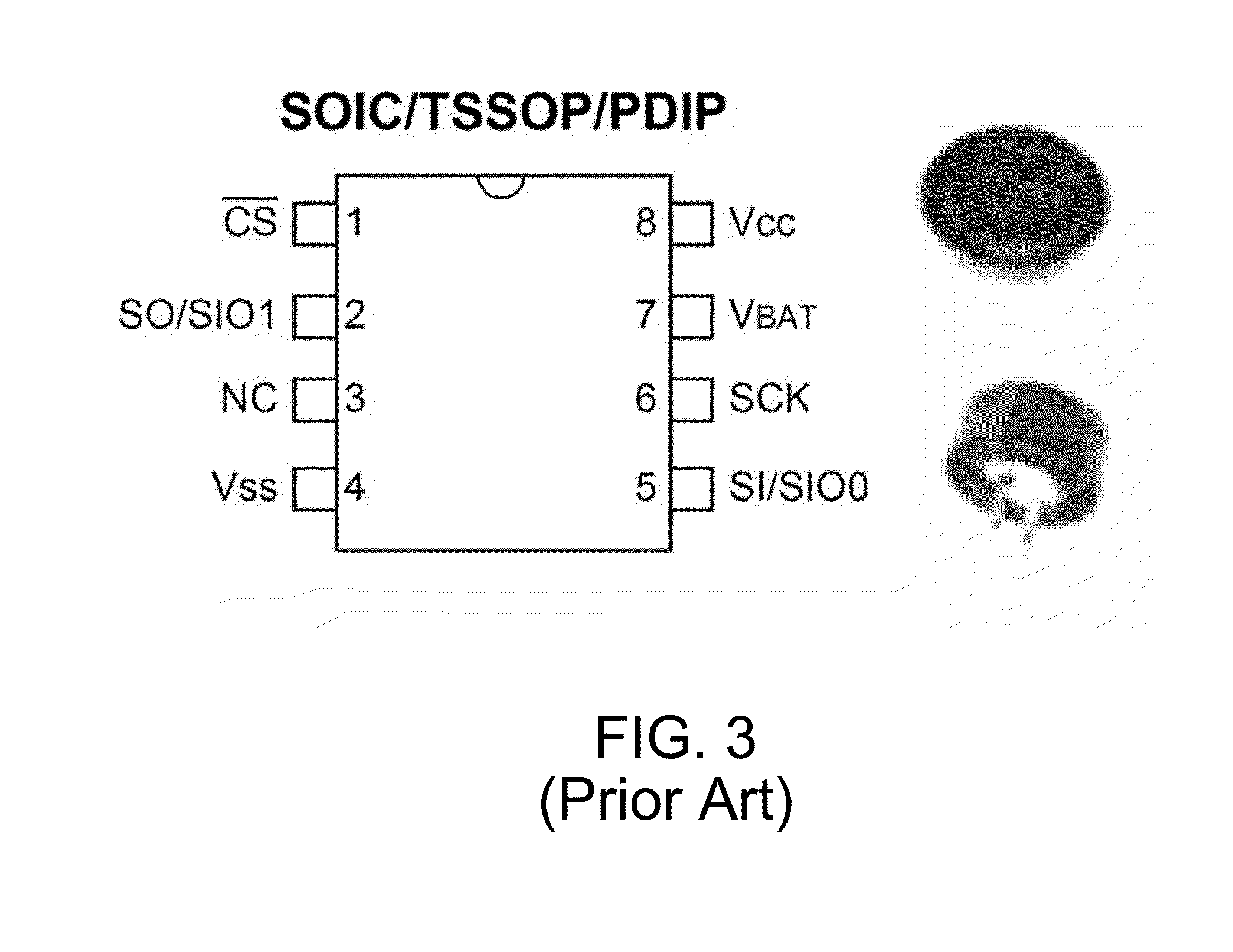On-chip HV and LV capacitors acting as the second back-up supplies for nvsram auto-store operation
a technology of nvsram and auto-store operation, which is applied in the direction of static storage, digital storage, instruments, etc., can solve the problems of failure, all on-going read, program and erase operations will be interrupted, and the single memory technology is not acceptable for many medical applications, etc., to achieve the effect of increasing the capacitance of the mim layer for vppcap and vcccap and speeding up the pa
- Summary
- Abstract
- Description
- Claims
- Application Information
AI Technical Summary
Benefits of technology
Problems solved by technology
Method used
Image
Examples
Embodiment Construction
[0064]The present invention generally relates to a preferred method to improve the efficiency of the low-current VPP or VNN program operation, depending on the definition of the erase and program operation by using the on-chip HV capacitor and LV VCC capacitor for next-generation NVSRAM memory system circuit design upon VCC power loss.
[0065]It is more specifically relates to a faster three preferred on-chip always fully-charged capacitors of VPPcap, VNNcap and VCCcap as an alternative positive high voltage (+HV) or negative high voltage (−HV) and a LV power VCC supplies without using the costly and bulky Vcap and Vbat. If the defined program operation uses a +HV VPP to perform FN-channel program to selectively increase the flash cell's Vt, then the present invention prefers to form two on-chip capacitors of VPPcap and VCCcap as a back-up +HV and LV VCC supplies for an instant program operation. In contrast, if the defined program operation is reversely using −HV VNN to perform the F...
PUM
 Login to View More
Login to View More Abstract
Description
Claims
Application Information
 Login to View More
Login to View More - R&D
- Intellectual Property
- Life Sciences
- Materials
- Tech Scout
- Unparalleled Data Quality
- Higher Quality Content
- 60% Fewer Hallucinations
Browse by: Latest US Patents, China's latest patents, Technical Efficacy Thesaurus, Application Domain, Technology Topic, Popular Technical Reports.
© 2025 PatSnap. All rights reserved.Legal|Privacy policy|Modern Slavery Act Transparency Statement|Sitemap|About US| Contact US: help@patsnap.com



